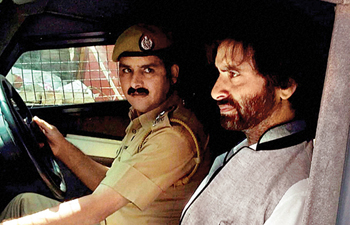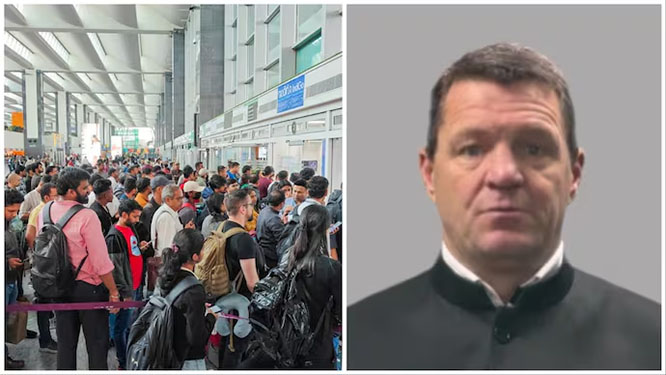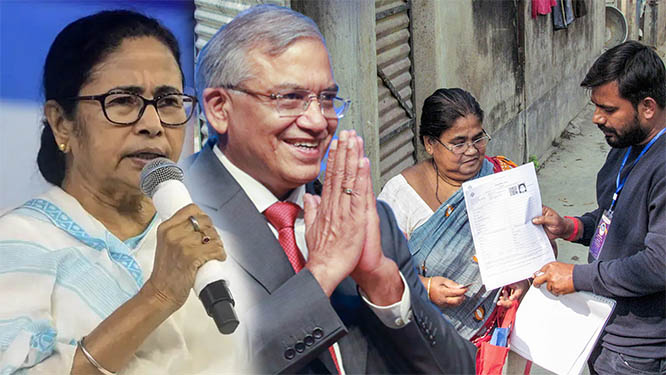Srinagar, Aug 21: Chaos and confusion reigned supreme after Mufti Mohammad Sayeed led PDP-BJP government did an about turn and released the separatists just two hours after detaining and placing them under house arrest in an apparent bid to prevent them from meeting Pakistan's national security advisor (NSA) Sartaj Aziz in New Delhi on Sunday.

Just two hours later the police lifted the barricades and informed him that he was a free bird, without explaining the reasons either for keeping him under house arrest or his sudden release. Mirwaiz is scheduled to meet Aziz during his reception at Pakistan high commission office in New Delhi on Sunday.
Simultaneously, a high drama unfolded at the residence of Jammu and Kashmir Liberation Front (JKLF) chief Mohammad Yasin Malik when a posse of police came and took him into custody. He was also taken to Kothi Bagh police station but was released one hour without citing any reason.
Malik, who was scheduled to visit New Delhi to meet Aziz, later chaired an extraordinary meeting and decided to send two-member delegation comprising vice-chairman Showkat Ahmad Bakhshi and secretary general Ghulam Rasool Dar Eidi to meet Aziz on Sunday.
Hurriyat hawk Syed Ali Shah Geelani, who is scheduled to meet Aziz on Monday morning, was already under house arrest. Unlike Mirwaiz and Malik, he continues to be under house arrest at his Hyder Pora residence.
The arrest and subsequent release of the separatist leaders sparked a political storm with separatists and main opposition party National Conference launching a frontal attack on Mufti-led government.
“Shame on Mufti Sayed for arresting on demand. He had no business following his masters’ orders & detaining the Hurriyat leaders like this… Serious question - just who is running J&K these days?” tweeted Omar Abdullah, former J&K chief minister and NC working president.
Facing flak, the J&K government sought to put the onus on the police, terming it an 'administrative action'. “Police sometimes take suo-moto precautionary measure given the law and order situation. There is nothing political about it. Had it been the intention to arrest them then we should have done it a day before. Why should we do it now”, Waheed-ur-Rehman Parra, political analyst to J&K chief minister Mufti Mohommad Sayeed, told dna.
Sources, however, said the order to arrest Hurriyat leaders had come straight from the desk of a top officer in Delhi. Senior police officers carried out the orders without consulting the state leaders. Sources said the Centre wanted to send a message to separatists that they are not invincible and can be detained when needed.
Former chief minister Omar Abdullah later said that PDP President Mehbooba Mufti was positioning herself to take credit for the release. "Now watch Mufti find a scapegoat to blame for the arrest of the Hurriyat,” tweeted Omar
Separatists, however, seem wary about their fate given the drama that unfolded on Thursday. “Our fingers are crossed (about allowing us to fly to Delhi to meet Aziz). We want India and Pakistan to move forward. We feel the dialogue is better than deadlock,” Mirwaiz told dna.
Controversies and bitterness notwithstanding, chief minister Mufti Mohommad Sayeed favoured a joint working mechanism between India and Pakistan to counter the scourge of terrorism.
“There is no good or a bad terrorists as they are all enemies of humanity. I am a born optimist. I see light in darkness which seems to be around. I hope that New Delhi and Islamabad will break ice in the upcoming NSA-level talks,” Mufti said.








Comments
Add new comment